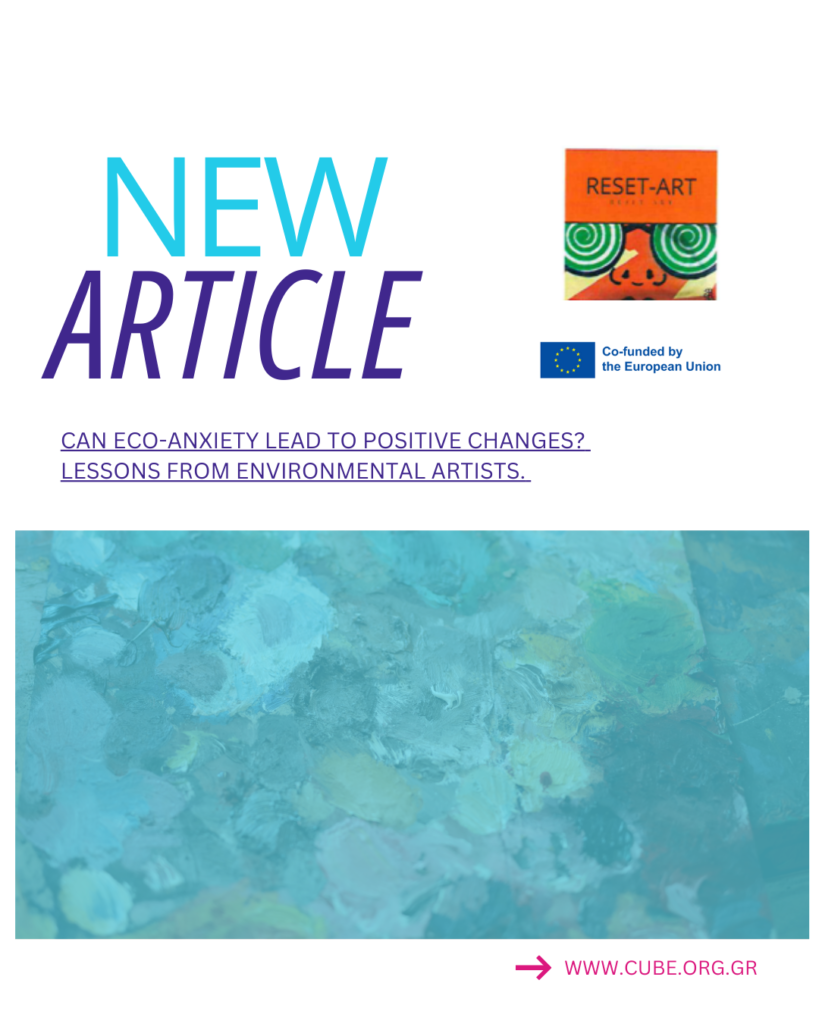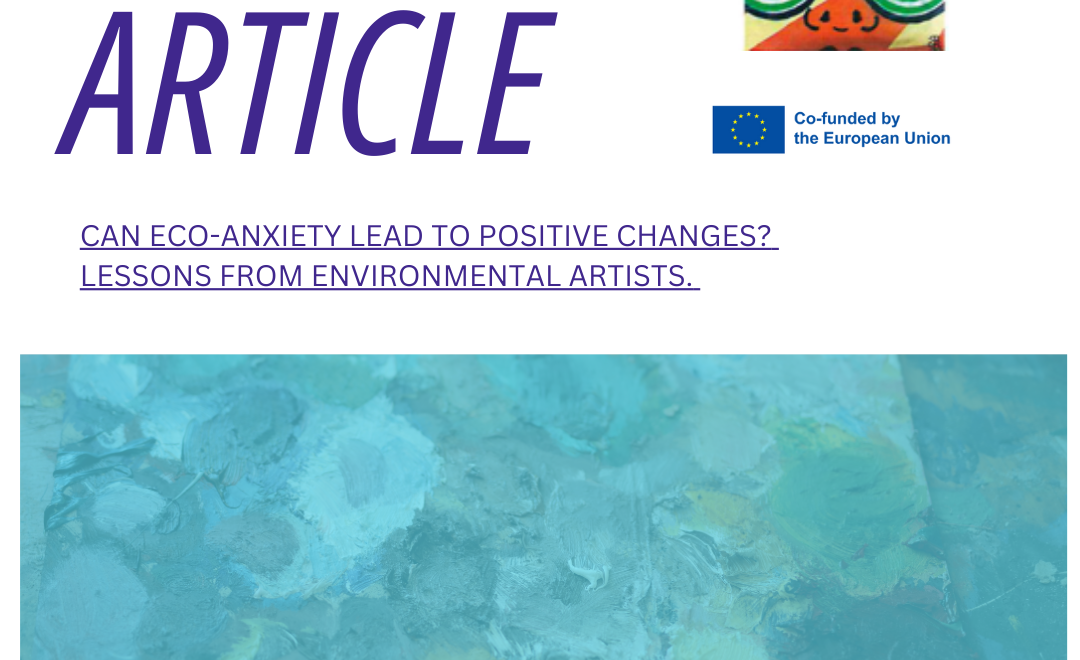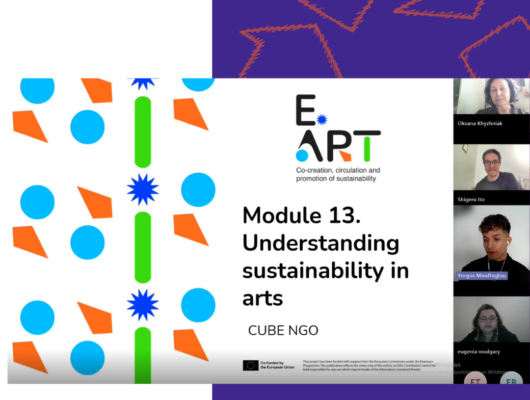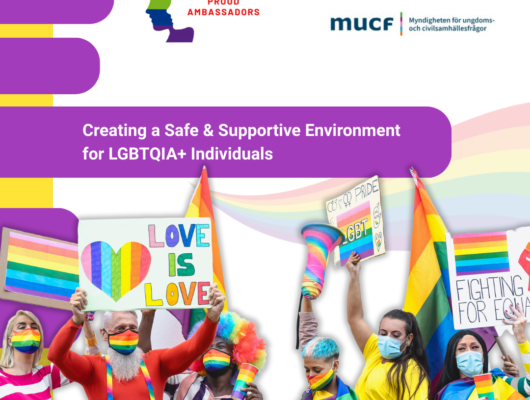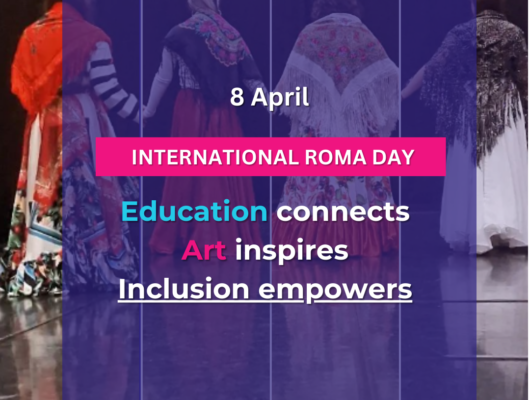The term “eco-anxiety” has gained increasing attention in recent years, especially as global awareness about climate change and environmental degradation grows. Eco-anxiety, often defined as the distress, fear, or anxiety related to the environmental crises facing the world, is becoming an increasingly common emotional response to the escalating threats of climate change. It manifests in feelings of helplessness, grief, guilt, and a sense of impending catastrophe. For many individuals, eco-anxiety can feel paralyzing, a source of overwhelming concern about the future of the planet. Environmental psychologists define it as a chronic fear of environmental doom. While eco-anxiety can undoubtedly be debilitating, since it is grounded in very real environmental challenges, there is growing recognition that it can also serve as a motivational force, as it carries the potential for positive change, especially when channeled through creative and performative expression. Besides, many psychologists and environmental advocates argue that eco-anxiety can be transformative if properly harnessed. Instead of allowing individuals to retreat into despair, the energy generated by eco-anxiety can be redirected into action. This shift from passive fear to proactive engagement can inspire collective efforts to address environmental issues, whether through activism, education, or creative expression.
The performing arts have long been a site for social and political critique. Therefore, they offer a powerful outlet for addressing eco-anxiety, transforming this emotional response into narratives that educate, provoke thought, and foster collective action.
From ancient Greek theater to contemporary performance art, artists have long used performance to address societal issues, challenge authority, and inspire change. Today, environmental concerns are central to many theatrical productions, dance performances, and live installations, employing metaphor, storytelling, and movement to engage audiences emotionally and intellectually. By humanizing abstract environmental concepts and focusing on human stories, the arts make the climate crisis tangible. Environmental artists transform eco-anxiety into a shared experience, fostering empathy, hope, and collective responsibility while inspiring imaginative solutions for a sustainable future.
This article explores how eco-anxiety “translated” into art can lead to positive change, using examples drown by the rising number of theatre and dance artists who are turning to their work as a means to confront eco-anxiety and promote societal change. Their works demonstrate how eco-anxiety can be channeled into creative projects that address the climate crisis, while also engaging with larger questions of social justice, cultural transformation, and ecological sustainability.
One of the most prominent examples of eco-anxiety in the theater is “The Climate Change Theatre Action”1, a global event that takes place every two years since 2015. Founded by Elaine Ávila, Chantal Bilodeau, Roberta Levitow, and Caridad Svich who followed a model pioneered by “NoPassport Theatre Alliance”2, this event involves hundreds of theaters across the world staging short plays, monologues, and performances that address climate change and environmental issues, written by the fifty artists representing all inhabited continents and several cultures, who apply to take part in the festival. These works often reflect the emotional turmoil and despair that come with eco-anxiety, but they also strive to foster hope and inspire action. “Climate Change Theatre Action” creates a sense of solidarity, inviting people to acknowledge their anxieties and then act on them collectively.i
As a more localized example, the British Theatre Industry has been actively pursuing sustainability to reduce its environmental impact. It has released “Green Theatre Book”3, a comprehensive guide developed by theatre-makers to promote sustainable practices in productions, buildings, and operations. It serves as a resource for theatres aiming to achieve net-zero emissions. Apart from that, various theatre companies have already produced numerous performances leading the debate towards eco-anxiety.
To begin with, the Scottish Dandee Rep Music Theatre Company should be mentioned, and its pop musical “This is a Love Story” which according to the words by Elen Leslie, a theatre reviewer in “The Indiependent”,4 tells the 200.000-year-old love story between Earth and Humanity and describes how Humanity gradually adopts “messy habits and manipulative ways” against Earth and how Earth is beginning to tire by them, leading their firstly strong relationship to crack.5
Eco-anxiety is something that ever since the 2010s concerns the British performance artists. The multimedia performance “The Edge” co-produced by Folkstone-based Transport and New Wolsey Theatre in Ipswich, incorporates text, movement, story-telling and projections and narrates the love story between two people on two different continents connected by shared experience of a changing world. The narration of the story features myths from the sea, the history of human migration, and the formation of rivers and seas.6
The Royal Shakespeare Company could not be absent of such a societal act so in 2024 it performed “Kyoto”7 by Joe Murphy and Joe Robertson; a play reviewing the Kyoto protocol and discussing the negotiations leading to that first global commitment to tackle the issue of climate change, in 1997. The performance also used technological tricks to “transport” the audience from one conference to the other and built some atmosphere using well known scenes from famous movies (such as a falling chandelier). Using the words of the reviewer Bethany Hill “Kyoto is a play that dares to challenge, to question and to at times make you feel uncomfortable” while examining the crucial matter of climate change and the impact of words.8
Fringe Festivals are always a welcoming place to perform experimental projects on pivotal issues and there is no better option from the first ever Fringe Festival to get formed, in Edinburg. In the 2024 production, “Weather Girl” was performed by Julia McDermott and directed by Tyne Rafaeli. The play is a comic monologue which dramatizes the apocalyptic outcomes of a changing climate as seen through the eyes of a weather forecast presenter.9
Apart from theatre, dance, is also a form of expression that can evoke powerful emotional responses. As a physical language, dance can express complex feelings of eco-anxiety, grief, and anger, as well as hope and resilience.
The U.S, have always been a hothouse for contemporary dance a long time now. There are numerous choreographers in that multifaceted metropolis who gain their inspiration by vital climate change issues.10
Jody Sperling took part in a creative residency with a polar science expedition and had the chance to dance on Arctic ice. Her improvisational performance was edited into the short film Ice Floe11 where the dancer embodies a time-lapse of ice morphology. Her later chorographical work Ice Cycle (2016) was inspired by that exact experience. The performance expresses the fragility and dynamism of ice while the music by Matthew Burtner, who uses climate-change materials and data in his compositions, distills the crystalline rhythms of ice and echo its intimate interplay with water.12 Following the words of the reviewer Deirdre Towers we learn that the dancer’s costume was inspired by the melting of ice as it had patterns of ice “in varying degrees of opacity”. The reviewer has also deciphered the speed of Sperling’s dance and suggests that towards the end, when the dancer accelerates her movement, the audience is observing “the increasing speed of environmental transformations”.13
The Santa Fe– and San Francisco–based choreographer and director of Dancing Earth14, Rulan Tangen mentions that “What’s being called climate change is only one terrible symptom of a system that is based in inequity and lack of respect for all forms of life,” Her 2020 work Between Underground & Skyworld or in shorthand “BTW US” was shared as a work in progress in which performers and audiences would explore renewable energy from spiritual, cultural and practical perspectives by remembering ancestral cultural perspectives as stories of re-creation through processes that engage the community to cultivate and imagine a sustainable and regenerative, vital, collective future.15
Eco-anxiety, while often perceived as paralyzing, can serve as a catalyst for profound transformation when channeled through the arts. The works of environmental artists demonstrate how this deeply felt unease about climate change can be transmuted into meaningful action and awareness. Through evocative storytelling, movement, and immersive performances, these artists illuminate the human connection to a rapidly changing environment, inspiring audiences to confront their own anxieties and consider their role in fostering positive change. The work of these environmental artists underscores that eco-anxiety is not just a symptom of the climate crisis but a powerful call to action. It demonstrates that through creativity, storytelling, and community engagement, this emotional response can ignite a paradigm shift, fostering a world where respect for life and commitment to environmental justice take precedence. Their art serves as a testament to the transformative potential of eco-anxiety, turning fear into hope and despair into determination.
The article was written by Adriana-Anna Tsiotsiou.
